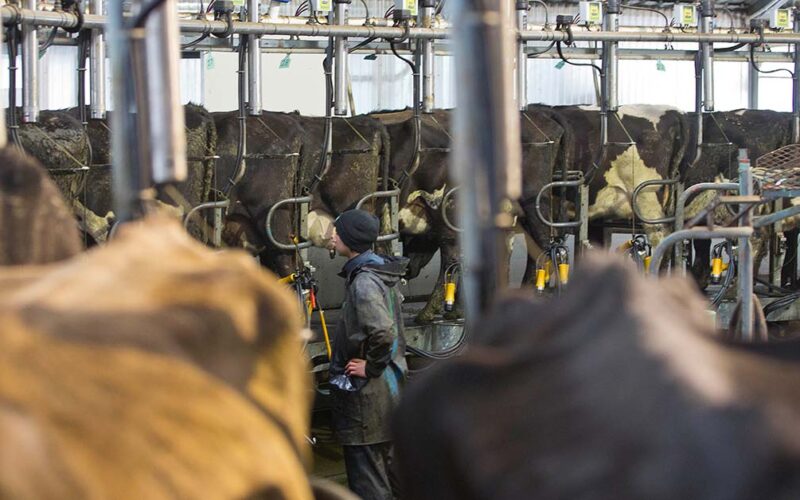Two flat GDT results in April have cemented the gains dairy prices made earlier this year.
The 0.3% lift and 0.1% fall this month meant whole milk powder prices (WMP) are at US$4097/tonne.
NZX analyst Stu Davison says the latest result looked as if the GDT index had now settled into a new price range and the move prompted three of the banks to raise their milk price forecast for the new season.
Westpac was the most optimistic, lifting their forecast 75 cents to an eye-watering $8/kg MS.
Writing in the bank’s Dairy Update, senior agri economist Nathan Penny says he expected prices to start the new season on the front foot.
“For example, in milk price terms, the auction result overnight (using the auction results and today’s level of the NZD/USD) equates to a milk price of over $9/kg.”
He expected global prices to moderate over the course of the season, with WMP prices expected to fall 18%.
Penny says he expected a modest supply response to the prices with constraints expected to come on from environmental pressures, competition for land and water, and constraints on capital and labour.
Global dairy supply is similarly constrained. The European Commission and the USDA expect relatively modest growth over 2021 of 1% and 2%, respectively, for reasons similar to New Zealand’s, he says.
Demand, however, is strong and ongoing largely thanks to continuous demand out of China and South-East Asia, which Penny believes has no signs of ebbing.
ASB is a bit more conservative, lifting its new season milk price 20c to $7.50/kg MS in their Commodities Weekly publication.
Its chief economist Nick Tuffley emphasised it was “very, very early days” and expected Fonterra’s forecast to be at a wide range.
The latest auction saw Chinese buyers return after being absent in early April.
“The vast majority of product on offer was captured by the North Asia region, with other parts of the globe taking lower volumes than at the last auction,” Tuffley says.
He expects commodity prices to hold their ground in the coming months.
“There is scope for further gains in meat and forestry prices and, while we expect further easing in dairy prices, we remain sceptical that a sharp correction is on the cards,” he says.
ANZ’s April Agri Focus emphasised the effect the strong global markets were having on milk prices and it forecasted $7.30/kg MS for next season.
“The recent strength in global markets, combined with a slight softening in the NZD, has been supportive of farm gate milk prices. We are forecasting $7.70/kg MS for this season and $7.30/kg MS for next season,” it said.
The bank also expected prices to soften, predicting WMP prices to ease back to USD3500/t and the NZD will be at USD0.77 by the end of this year.
Like Westpac, it says while global supplies are growing, it was not enough to negatively affect prices despite the Northern Hemisphere hitting its peak production period.
If history is to go by, Fonterra will stick to a conservative forecast with a wide range when it announces it in late May. This is after past criticism of posting a high opening forecast only to have to correct it mid-way through the season – after many farmers had already committed to spending decisions.
It’s a point Rabobank’s Emma Higgins made in the bank’s Agri Business Monthly.
“At this stage market fundamentals support another profitable milk price, but with the re-emergence of more volatile price signals it’s likely there will be an element of conservatism in opening ranges.”
As this season starts to wind down, most will be pretty happy with how it has gone, largely thanks to persistent and timely rain throughout March and April, which has helped retain pasture growth.
There have been fishhooks: high facial eczema-causing spore counts in many areas of the North Island, bone-dry weather in eastern areas, a jump in on-farm expenses and of course, the staff shortages brought about mostly by the covid-19 border lockdown.
But most farmers should look back at this year with the good returns and the small part they played in propping up the economy during the covid lockdown with a great deal of pride and satisfaction.










